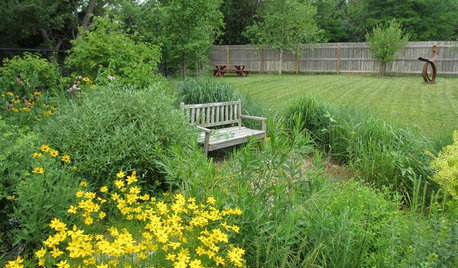Choosing hosta for warmer climates
User
10 years ago
Related Stories

ARCHITECTURE15 Smart Design Choices for Cold Climates
Keep your home safe and comfortable in winter by choosing the right home features and systems
Full Story
GARDENING GUIDES6 Dependable Ground Covers for Warm Climates
Swap some lawn for these drought-tolerant clumping plants — and watch your maintenance efforts diminish while they easily grow
Full Story
GARDENING GUIDES7 Fall Beauties for Mild-Climate Container Gardens
We're talking long-term relationship: These showy shrubs will bring color to your container garden autumn after autumn
Full Story
KITCHEN DESIGNEcofriendly Kitchen: How to Choose Flooring
Conserve natural resources and your long-term finances by choosing kitchen flooring materials with durability and beauty
Full Story
FENCES AND GATESHow to Choose the Right Fence
Get the privacy, security and animal safeguards you need with this guide to fencing options
Full Story
MOST POPULARSpring Gardens Are Blooming — Here’s What to Do in April
Get the guide you need for gardening in your U.S. region, with tasks, climate-appropriate plantings and more
Full Story
GARDENING GUIDESHow to Plant a New Lawn From Seed
Choose from more grass varieties and save money over sod by starting your lawn from seed
Full Story
TREES11 Japanese Maples for Breathtaking Color and Form
With such a wide range to choose from, there’s a beautiful Japanese maple to suit almost any setting
Full Story
GARDENING GUIDESHow to Design a Garden That Lasts
Climates are changing. Wildlife is evolving. Can your garden keep up?
Full Story
FARM YOUR YARDIf You Have Room for Only One Fruit Tree ...
Juice up a small garden with one of these easier-care or worth-the-effort fruit trees for a mild climate
Full StoryMore Discussions








Babka NorCal 9b
bkay2000
Related Professionals
Panama City Landscape Architects & Landscape Designers · Wheeling Landscape Architects & Landscape Designers · Cliffside Park Landscape Contractors · Fairview Landscape Contractors · Lebanon Landscape Contractors · Northport Landscape Contractors · Escondido Driveway Installation & Maintenance · Foley Driveway Installation & Maintenance · Libertyville Driveway Installation & Maintenance · Clermont Fence Contractors · Lenexa Fence Contractors · Novato Fence Contractors · Piedmont Fence Contractors · Saginaw Fence Contractors · Saratoga Springs Fence Contractors